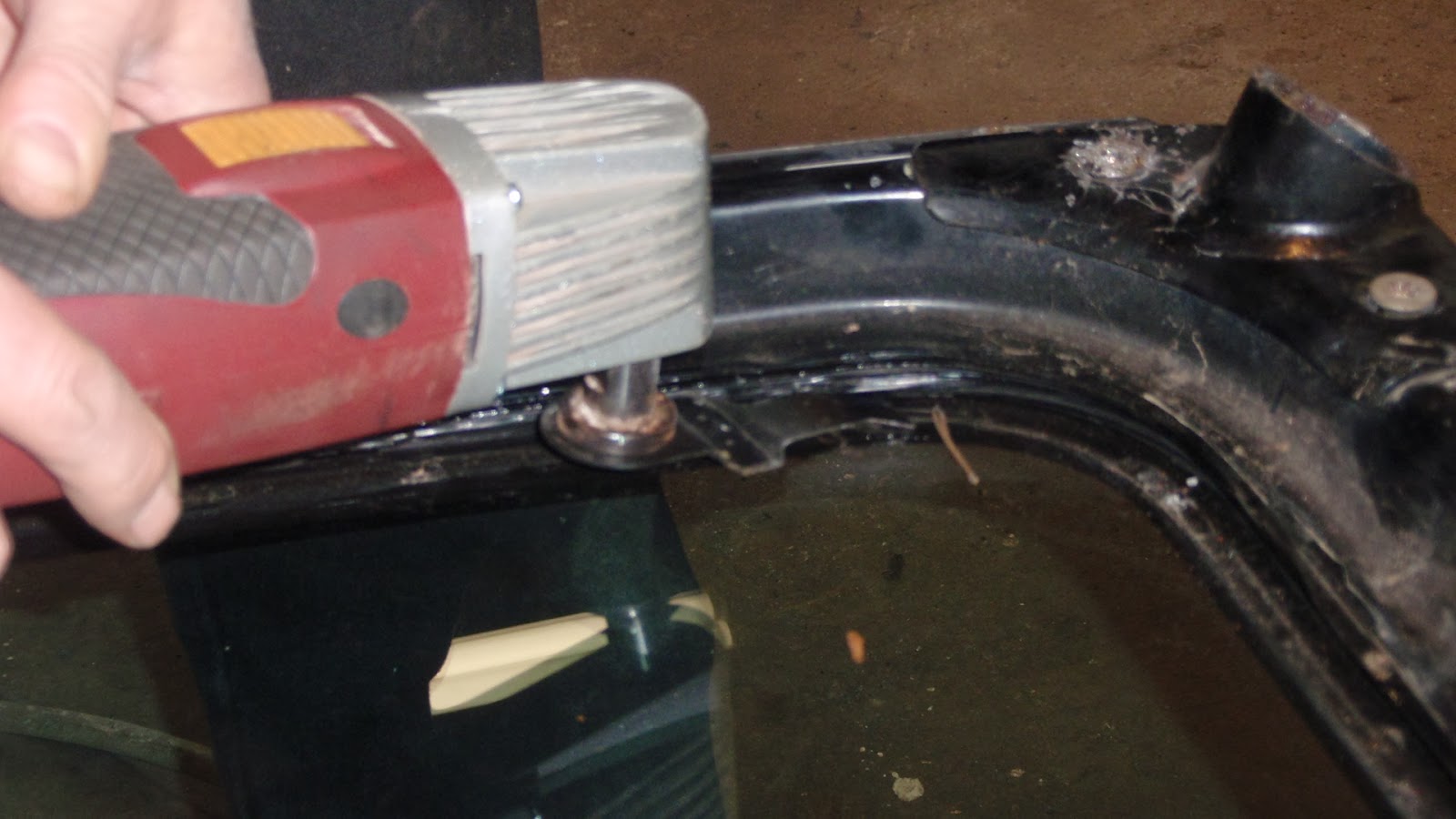Took a little "brake" from the windshield since Jeffrey headed back to New York, I needed something I could do without help, so I finished up connecting the brake booster to the pedal. The brake booster came with a 3/8" - 24 right hand thread and the brake pedal rod on the Wrangler booster was 1/2" with a taper and ball on the end. I assembled the new booster to the firewall and measured to the centerline of the pin on the brake pedal to the end of the 3/8 shaft on the booster. The Wrangler rod was then cut to that length. The brake pedal on the CJ was uncomfortably and unnecessarily high since it was originally manual and
was now power assisted. I thought it would be pretty cool to have an adjustable pedal height. Not like on some newer vehicles where you can adjust it from the dash but at least one time adjustable to the driver and then leave it set. So since the brake rod was 1/2" I decided to thread it 1/2" - 20 left hand, then make up a coupler similar to a turn buckle that after it was assembled the coupler could be turned to adjust the height of the pedal. 3/4" steel hex stock was used and tapped one end 3/8" - 24 right hand
and the other end 1/2" - 20 left hand. I had a tap from my bicycle days but needed a die to thread the brake rod. MSC Industrial Supply came through on that one. https://www.mscdirect.com/product/03844214?rItem=03844214 A new 3/8" lock nut was supplied with the new booster but I had to make up a left hand one for the brake rod end. Assembled everything and adjusted the pedal height to suit and cinched down the lock nuts. Jeffrey painted the
master cylinder and lid before he left but was not pleased with the black lid and the fact that it gets scratched when ever the clamps are slid into place, so a chrome one is on the to get list.
was now power assisted. I thought it would be pretty cool to have an adjustable pedal height. Not like on some newer vehicles where you can adjust it from the dash but at least one time adjustable to the driver and then leave it set. So since the brake rod was 1/2" I decided to thread it 1/2" - 20 left hand, then make up a coupler similar to a turn buckle that after it was assembled the coupler could be turned to adjust the height of the pedal. 3/4" steel hex stock was used and tapped one end 3/8" - 24 right hand
and the other end 1/2" - 20 left hand. I had a tap from my bicycle days but needed a die to thread the brake rod. MSC Industrial Supply came through on that one. https://www.mscdirect.com/product/03844214?rItem=03844214 A new 3/8" lock nut was supplied with the new booster but I had to make up a left hand one for the brake rod end. Assembled everything and adjusted the pedal height to suit and cinched down the lock nuts. Jeffrey painted the
master cylinder and lid before he left but was not pleased with the black lid and the fact that it gets scratched when ever the clamps are slid into place, so a chrome one is on the to get list.





























